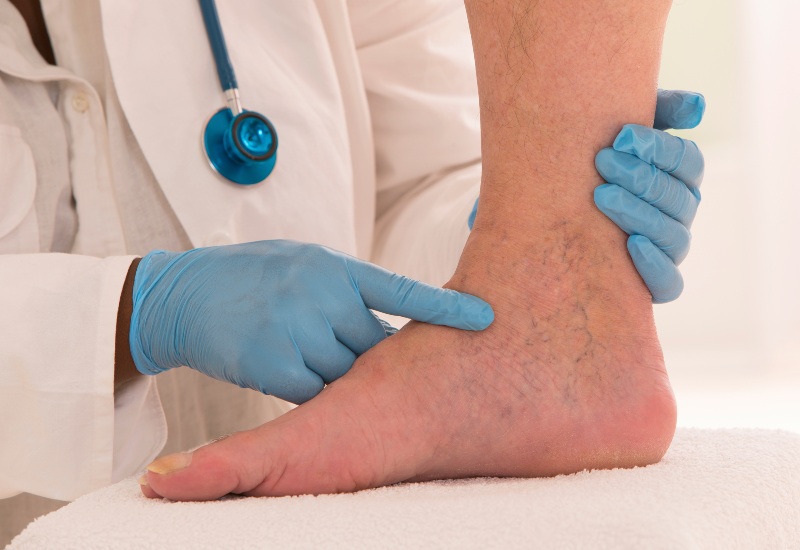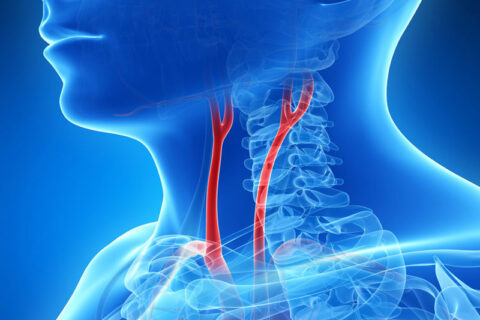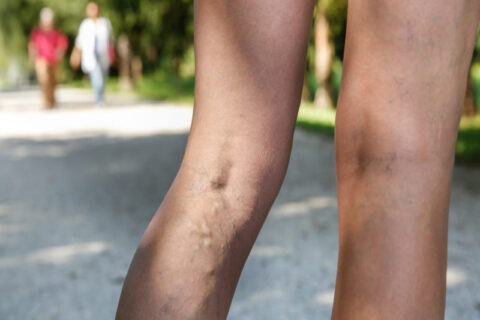Possible Reasons for Bulging Veins

Possible Reasons for Bulging Veins
Bulging veins can be unsightly and annoying. What are bulging veins? What causes them? What are some manageable treatments for bulging veins? Is there anything to be done? Are bulging veins a serious health concern or just an annoyance? The California Vein and Vascular Centers can answer all your questions about bulging veins. Here are some essential facts about these unsightly abnormalities.
What are Bulging Veins?
Bulging veins occur when circulation isn’t quite what it should be in the body. Veins function to facilitate blood flow through a series of valves. When blood pumps from the heart, these valves open and close. When valves in the veins don’t function properly, bulging veins may appear. Another reason bulging veins may occur is the presence of an obstruction in the vein. These types of issues may require medical attention.
Three Potential Causes of Bulging Veins
There are three major potential causes of bulging veins.
-
- Pregnancy
A leading cause of bulging veins, pregnancy puts stress on the veins. This is because the body requires a greater volume of blood to circulate when a woman is pregnant. Additionally, the blood flow from the pelvic region to the legs is reduced because of pressure in that area. This type of decreased blood flow can cause bulging veins. As the pregnancy progresses, there is even more extensive pressure in the lower abdomen and uterus. This can cause more stress on the veins and valves and lead to more of an issue with bulging veins. - Varicose Veins
Any varicosity in the legs can lead to bulging veins. As we age, we are more likely to develop varicose veins. They occur when blood pools in the veins due to the valves in the vein weakening over time. Age can be a contributor to varicose veins, but other factors may also play a role in the development of varicosities. Obesity is one factor that plays a role in varicose veins because it puts more pressure on the legs. Genetics can be a contributing factor as well. If your mother has varicose veins, likely, you will also develop them over time. A sedentary lifestyle can also lead to varicose veins. When someone spends most of the day seated, circulation is decreased, and pooling of the blood can occur. Varicose veins can then lead to bulging veins.
- Pregnancy
- Peripheral Vascular Disease
Sometimes, bulging veins can indicate something more serious. They can be a symptom of peripheral vascular disease. Peripheral vascular disease occurs when the blood flow to the lower half of the body is restricted. This is because the blood vessels narrow, and blood flow decreases or is prevented in the veins. This could be due to many factors, but the leading factor is increased plaque within the blood vessels. Many factors can contribute to peripheral vascular disease. Some of these include high blood pressure, diabetes, smoking, high cholesterol, and obesity.
How Serious Are Bulging Veins?
Bulging veins can be indicative of the above cardiovascular issues. But they can also indicate other problems. Bulging veins can be quite severe and a cause for concern. Individuals must seek medical treatment for bulging veins as soon as they occur. They can be a symptom of thrombophlebitis or other valve disorders. But they can also be symptomatic of blood or bodily infections. Additionally, they can be a sign of tumors or blood clots. Suppose individuals have other issues concerning the legs, such as pain or redness, ulcers, sores, or swelling. In that case, a physician should be consulted immediately to make sure there are no serious underlying medical issues.
How Can Bulging Veins Be Prevented?
Although some factors can’t be prevented, others can be of note when seeking to avoid bulging veins. Some of those factors are as follows:
- Maintain a Physically Active Lifestyle
A lifestyle that allows for exercise is the best lifestyle choice overall. Exercise is good for nearly every aspect of life, but it also helps keep the veins in good health and blood flow circulating. That way, blood is less likely to pool in the veins, and bulging veins can be avoided. - Keep Legs Elevated When Possible
Keeping legs elevated means blood is less likely to pool in the lower extremities. - Keep Your Body at a Healthy Weight
Obesity is a leading cause of vascular issues, so maintaining a healthy weight is critical to avoiding problems. - Compression Socks
Stockings or socks that are recommended for compression gently compress the leg, pushing the blood back toward the heart and preventing pooling in the legs. - Avoid Tight Clothing
Choose loose-fitting clothing to improve better circulation. - Avoid Sitting or Standing for Long Periods of Time
Sitting or standing for long periods causes blood to pool in the lower extremities. If your occupation forces you to sit or stand, make sure to take walk breaks. - Maintain a Diet of Healthful Foods
A healthy diet is vital to preventing obesity, and a healthy, low-salt diet can help prevent fluid buildup and blood pooling in the legs. - Avoid Stress
Chronic stress can cause significant cardiovascular issues. Meditation or deep breathing can help lower blood pressure and maintain optimal cardiovascular health. - Hydrate
Hydration can help reduce salt levels in the body, preventing fluid retention and taking pressure off the legs. - Don’t Smoke
For many reasons, don’t smoke.
Conclusion
Bulging veins can be a sign of poor valve health and can also indicate more significant issues. When in doubt, see a vascular specialist.
California Vein and Vascular Centers
Bulging veins can be quite serious. When it’s time to consult with a vascular specialist, the medical team at California Vein and Vascular Centers can help. Providing treatment for leg swelling, varicose veins, bulging veins, and all other peripheral arterial and venous disorders, we are the most qualified specialists in the Bay Area. Ranked first in California for vascular procedures and in the top five in the nation for the number of vein procedures we perform, our board-certified surgeons will show the utmost care in treating vascular disorders. Please schedule an appointment today or visit our website to discover the numerous services we offer.


